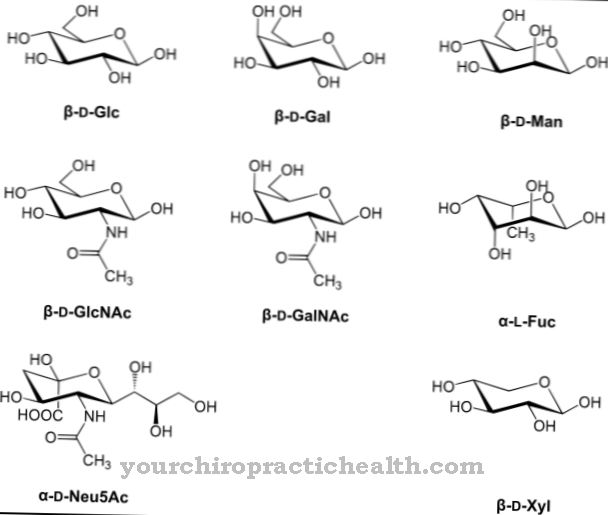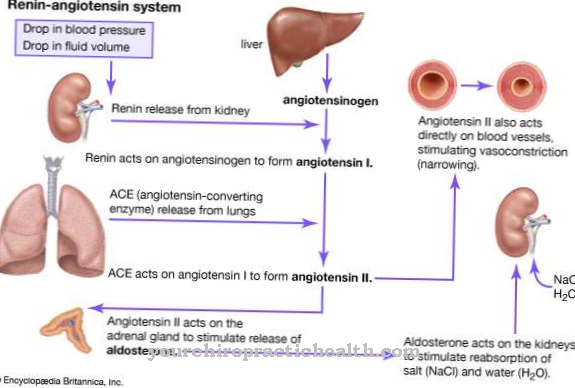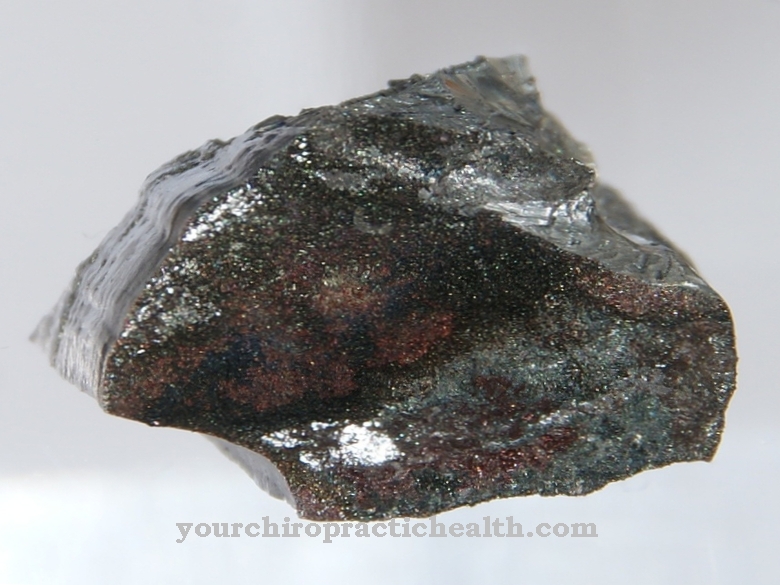copper is a chemical element and is one of the transition metals. It occurs as a trace element in biological organisms. There it fulfills important functions as a cofactor in metalloenzymes.
What is copper
Copper is an important trace element in all biological organisms. As a cofactor, it is part of important enzymes. In nature, copper often occurs as copper ore together with iron or alone as copper sulfide. In its solid state, it is a little reactive heavy metal.
It is one of the semi-precious metals. As a pure metal, copper is bright red in color. A layer of corrosion slowly develops on the surface, which changes from a reddish-brown color to a bluish green. It has different meanings within the organisms. For many bacteria, copper is a poison because it can form complexes with thiol groups of proteins. It also reacts with the lipids in the cell membrane to form peroxides and is therefore responsible for the formation of free radicals. However, it also supports many enzymes in vital reactions. The iron and copper metabolism are closely linked.
Copper deficiency diseases are very rare because the copper requirement can be covered well by food. Excessive copper concentrations in the body have more serious effects. Hereditary copper metabolism disorders are Wilson's disease and Menkes syndrome.
Function, effect & tasks
Copper is of great importance as a trace element in the human organism. As a cofactor, it promotes the function of many metalloenzymes. Copper is mainly bound to the transport protein ceruloplasmin.
Ceruloplasmin is responsible for oxygen utilization and electron transport. It takes on both transport and enzyme functions. The enzyme plays an important role in iron metabolism. It oxidizes divalent iron bound to ferritin to trivalent iron, which can bind to transferritin. The iron is thus transferred from the storage form to the transport form and is available for the transport of oxygen. To be able to perform this function, ceruloplasmin requires copper as a cofactor. Ceruloplasmin is also able to oxidize the aromatic diamines norepinephrine, melatonin and serotonin.
In addition to the mobilization of iron, copper in connection with enzymes is also responsible for the formation of the myelin layer that envelops nerves, protein metabolism, cell growth and the synthesis of melamine. It is absorbed from food in the intestine, stored in the liver, from there bound to ceruloplasmin or excreted again via the bile. The liver stores around 10 to 15 milligrams of copper. Furthermore, copper is an essential component of monoamine oxidase or cytochrome oxidase. Monoamine oxidase catalyzes the breakdown of monoamines such as noradrenaline, adrenaline or dopamine. Cytochrome oxidase is responsible for the mitochondrial respiratory chain.
Education, occurrence, properties & optimal values
The human organism is dependent on the supply of copper through food. It is mainly found in cereals, liver, vegetables, nuts and chocolate. But copper is also present in other foods. The daily copper intake of humans is approximately 2.5 milligrams. Of this, 0.5 to 2 milligrams are absorbed.
10 to 15 milligrams of copper are still stored in the liver. The copper blood level in an adult is around 74 to 131 micrograms per deciliter. Up to 60 micrograms of copper are excreted daily in the urine. A copper deficiency is very unlikely due to the low demand and daily availability.
Diseases & Disorders
Serious illnesses can occur in connection with copper. A copper deficiency is very rare. Usually there is an excess. Copper is toxic in high concentrations. First of all, however, possible deficiencies should be discussed.
A copper deficiency due to a poor diet is almost impossible. It is sufficiently available in the diet and the need is not very high. However, an increased supply of zinc or molybdenum can increase the copper excretion, so that an increased need arises. The main cause of a copper deficiency, however, is malabsorption. This can be caused by serious intestinal diseases such as celiac disease, Crohn's disease or ulcerative colitis. Typical deficiency symptoms are anemia, weakened immune system, disorders of the nervous system, pigment disorders of the skin, osteoporosis or weak connective tissue. However, in addition to a copper deficiency, there is also a general deficiency in nutrients, trace elements, minerals or vitamins.
An isolated copper deficiency is only to be expected with prolonged intake of zinc supplements or prolonged artificial nutrition. An overdose of copper is much more serious. Copper is actually a poison for the body. In the event of an oversupply, there is also free copper, which immediately forms free radicals. This leads to cell damage. Up to 5 milligrams of copper per day are harmless. However, if the intake rises above this value, poisoning can occur. Containers containing copper, in which acidic drinks or food have been stored for a long time, slowly dissolve and release copper into the food. This can also cause poisoning.
Copper poisoning manifests itself in abdominal cramps, vomiting and diarrhea. Sometimes they also end fatally. Most of the time, the excess copper is excreted. However, there are two hereditary diseases of copper metabolism. These are Wilson's disease and Menkes syndrome. Wilson's disease is a copper storage disease. The excretion of copper via the bile is disturbed. The copper accumulates in the liver and eventually leads to liver cirrhosis. In Menkes syndrome, the absorption of copper through the intestine is disturbed.




























